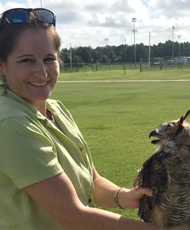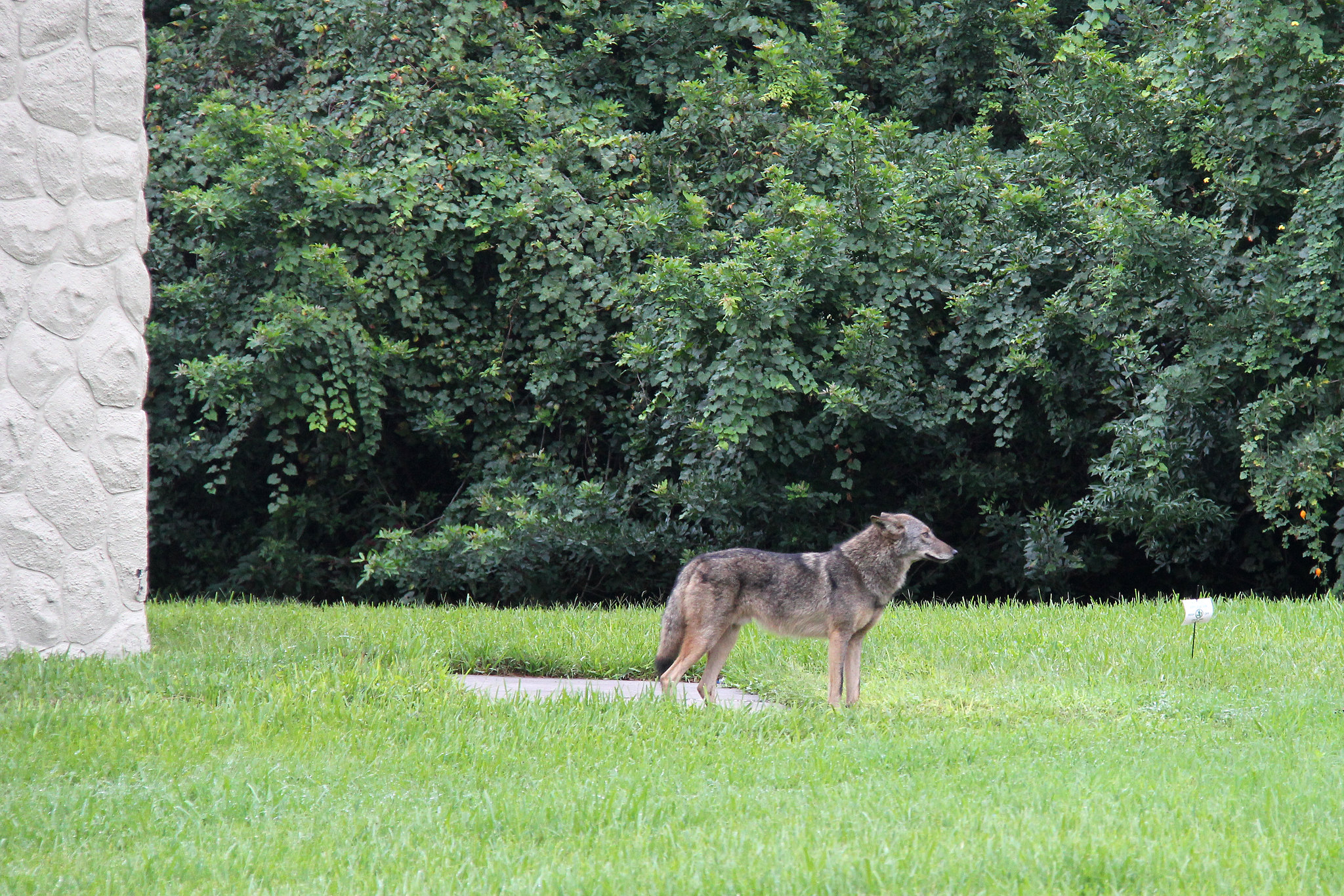
FWC photo by Carli Segelson
Though they are canine cousins, dogs are beloved while coyotes are reviled. There is no mystery to it.
Domesticated dogs, most at least, seek our attention and affection. Wild coyotes do not want to be nuzzled and they certainly don’t want our attention. But what makes them so different — and coyotes sio so successful in Florida?
By Joe Guidry
Americans have tried to kill coyotes in every way possible since Lewis and Clark first encountered them in the early 19th century. A National Geographic article once aptly called the coyote “the most hated animal in America.”
Yet talk with Angeline Barker, a certified biologist with the Florida Fish and Wildlife Conservation Commission (FWC), and one cannot help but marvel at a creature she calls “the ultimate survivor.”
Native to North America and historically found only in the West, the coyote now is “very much a part of the Florida ecosystem.”

Despite the coyote’s shady reputation, Barker believes that is not a bad thing. She will explain why in her presentation on coyotes at the Florida Birding and Nature Festival October 15-17, 2021 at TECO’s Manatee Viewing Center at Apollo Beach. The festival will offer field trips, exhibits and talks by wildlife experts.
Barker says: “The more I learn about coyotes, the more fascinating I find them to be. They have been persecuted by humans for centuries, using the same methods that nearly wiped wolves off the map, yet coyotes have expanded their range to every state in the contiguous United States.”
Throughout the settlement of the West, the coyote’s reputation as a ruthless threat to livestock caused government officials and farmers to wage war using guns, traps and poisons. Control efforts continue to this day. Nevertheless, the coyote thrives.
Barker acknowledges the coyote is a wily predator that may prey upon livestock, game animals or even pets. But its reputation as an indiscriminate killer is exaggerated.
“The indications are that coyotes are fitting in the ecosystem like most predators. Predators typically target weak or sick individuals, which improves the health of other wildlife and the ecosystems that support them.”
Coyotes will prey on or compete with some native species, such as turkeys and deer, but researchers have not found that the coyote’s migration to Florida has harmed native wildlife species, she explains.

Barker says some scientists believe that the coyote is filling the ecological niche of the red wolf, which once inhabited the state but was wiped out by the 1920s. The coyote thereby is providing “a more balanced ecosystem in Florida.”
It is interesting that while human persecution managed to nearly extinguish gray wolves, red wolves, alligators, panthers and other predators, coyotes managed to increase in number and expand their range.
Much of this may be attributed to its adaptability and intelligence. Unlike many predators, coyotes adjust to living in civilization, even in highly urbanized areas.
Barker attributes the coyote’s eastward migration to the transformation of wilderness into agricultural land. As the wolves were being wiped out, coyotes claimed the habitat and readily coped with the changing landscape.
While wolves hunt in packs, the coyote hunts mostly alone, though sometimes with family members, making it more elusive.

How smart is a coyote? Barker says to take a look at Urban Coyote Research’s website that tracks radio-collared coyotes. “These are coyotes surviving in Chicago, including some of the most densely populated areas of the city. The fact that they can survive for as long as they do in such an urban environment says a lot about how intelligent they are.”
Of course, Chicago is hardly the only city where coyotes live. They inhabit urban areas throughout the country. Florida is no exception. FWC regularly receives photographs and reports of coyotes in major cities, such as Miami, Tampa, St. Petersburg and Orlando.
City-dwelling coyotes should not be a surprise, she says. “To the layperson, it’s counterintuitive – how does a mid-sized carnivore like the coyote live in an urban place? But when you think about it from the coyote’s perspective, it’s really smart. The more people there are, the more food there is, like pet food, garbage, raccoons, rats, cockroaches and such. The coyote can make a better living around people than it can in rural areas.”
To minimize the chances of attracting coyotes to your neighborhood, Barker urges caution about putting substances outside that can attract them, such as pet food, garbage and birdseed.
Securing pets is important. So is “hazing” — yelling, making loud noises, throwing things or other tactics to drive the coyote away and make it afraid of humans, which will keep it from becoming a problem animal.
Barker says coyotes can breed with dogs, but this is rare because they have different breeding cycles. Moreover, “they have different social structures; dogs are polygamous, and the male has no parental responsibilities. Coyotes are monogamous and the male raises his young. It would not be in a female coyote’s best interest to mate with a male dog. The offspring of that pairing would be much less likely to survive.”
It is notable that our pet dogs, so devoted to their owners, are faithless about relationships while wild coyotes are committed, she adds.
Such surprising revelations, which Barker will cover at the Birding Festival, could make at least some people re-evaluate their view of “the most hated animal in America.”
Joe Guidry is the former editorial page editor of The Tampa Tribune and a member of the Florida Birding and Nature Festival Board.
